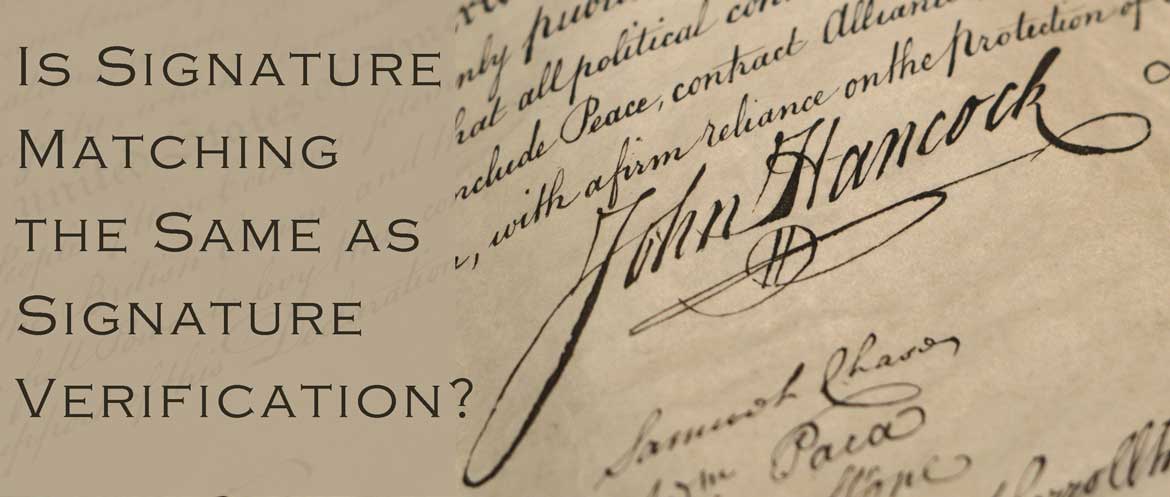 Parascript provides the industry’s most accurate signature verification software for image-based verification, and this means we receive a lot of inquiries as to the applications that this technology can provide.
Parascript provides the industry’s most accurate signature verification software for image-based verification, and this means we receive a lot of inquiries as to the applications that this technology can provide.
Signing and Securing Documents
One that we often receive is if signature verification can be used to sign and secure documents. The answer is “no.” Signing and securing documents uses “digital signatures,” which is very different from signature verification. For further details on this subject, Wikipedia offers a nice synopsis here.
A Person’s Signature and Readable Text
Another question we receive is if signature verification technology can “recognize” a person’s signature, translating it into machine-readable text. The answer is also “no.” The reason is that most signatures are not legible words or letters at all. They resemble hieroglyphs that are more shapes than translatable words. It is unreasonable to expect software to translate, for instance a doctor’s signature, into machine readable letters if a person cannot accomplish it!
Signature Matching and Signature Verification
A third question we often receive is if signature matching and signature verification are the same. The answer to this question is more complicated. Let’s explore this.
What Signature Verification Does
Signature verification involves the analysis of a written signature on a scanned document to determine if it was produced by the same person that is authorized to sign a given document. Signature verification is designed to account for the typical variances involved when people sign documents.
While we typically sign documents in a similar manner, the reality is that there are differences due to time of day, fatigue, how the document was signed (on a desk vs. using a wall for example), what was signed, and a number of other factors. So signature verification is designed to analyze these “hidden” variations and toss them out in order to focus on the core shapes that can be used to distinguish an authentic signature from a forgery.
What Signature Matching Does
Signature matching sounds similar, but the task involved is simply to match two signatures based upon resemblance. For instance, a business may want to find all the documents signed by a particular person such as a notary. In many cases, if there are legitimate variances between the two signatures, the result will still be a mismatch.
There are some solutions out there that provide signature matching that could never be applied to signature verification primarily because the technology looks at comparing pixels vs. looking at key shapes that can indicate they were both created by the same person. Examining two signatures using rules that test to see if the two signatures are similar at a pixel level is fairly straightforward, but very error prone. Even if this software can account for slight variances such as size or length of shapes, it will provide poor results in real production environments. This means false negatives meaning more legitimate signatures are rejected as forgeries.
Signature Verification Automation Benefits
Interestingly, signature verification can be used to provide signature matching, largely because the core objective is to match two signatures made by the same individual. In this case, it doesn’t matter if there are variations, we just want to understand if a specific document’s signature matches other known genuine signatures. In this case, using verification technology can yield superior results vs. pixel-based matching since it can handle and discard meaningless variations.
So when considering adding automation that involves signatures, it is very useful to understand what your true objectives are: if you are only in need of pure matching, then a basic pixel-based analysis will suffice. However, if you expect to analyze signatures that could have variations, technology that analyzes core shapes without regard to variances is the best approach.
Find out the latest in Signature Verification Automation here:



